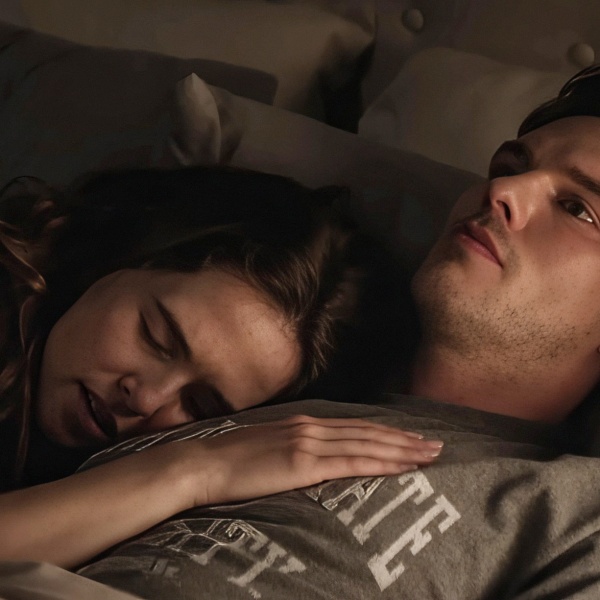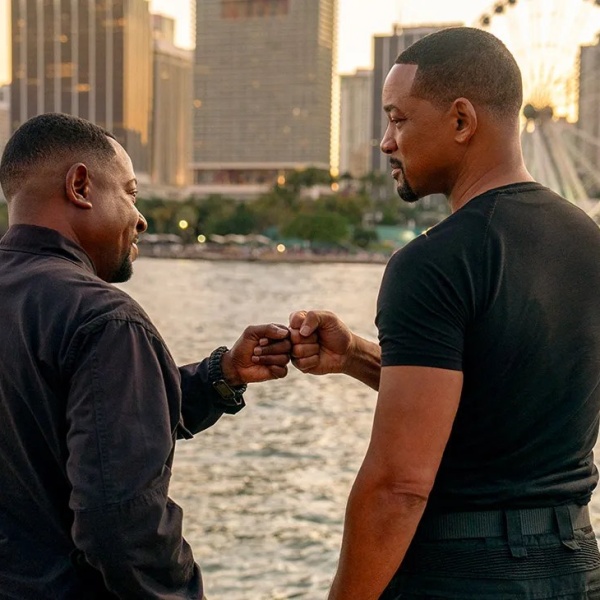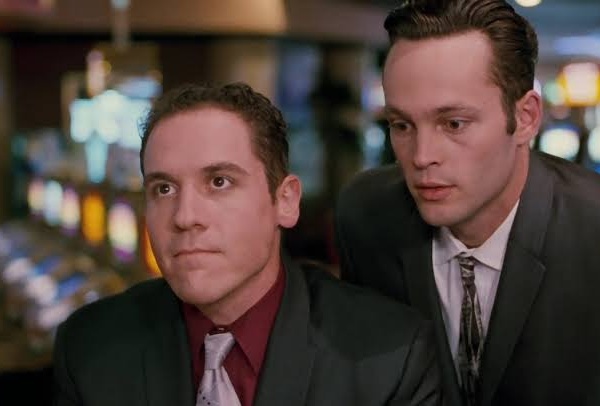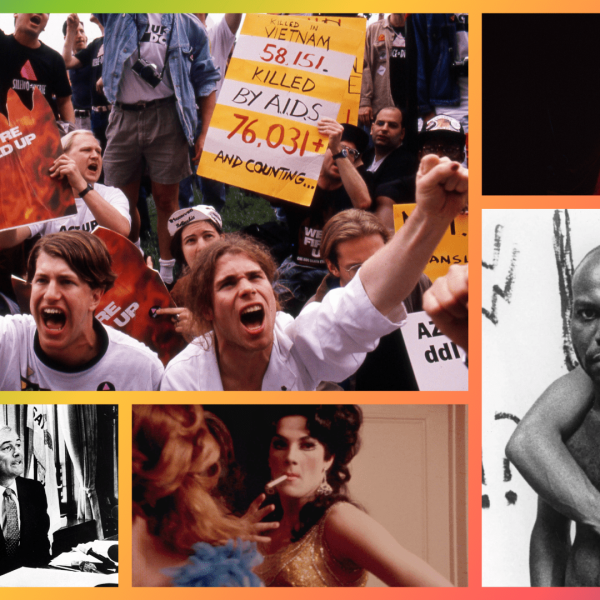When IndieWire recently ranked the 25 best films of Alfred Hitchcock, it was probably no surprise to anyone that “Mr. and Mrs. Smith,” the director’s sole attempt at a light romantic comedy, didn’t make the cut. Even Hitchcock himself tended to underrate the film, as when he told interviewer François Truffaut that “since I didn’t really understand the type of people who were portrayed in the film, all I did was photograph the scenes as written.” From a filmmaker who regularly dismissed movies he considered uncinematic as mere “photographs of people talking,” this was the ultimate self-directed insult.
Yet even a casual reappraisal of “Mr. and Mrs. Smith,” newly available in an exquisite Blu-ray special edition from Warner Archive, undermines Hitchcock’s claims about his own movie. While it would be a bridge too far to declare the film a masterpiece on a par with “Psycho” or “Rear Window,” it’s both a supreme entry in its genre (the screwball comedy) and an intriguing exploration of themes that had obsessed the director for years before and would continue to obsess him for subsequent decades. The tensions between the filmmaker and his subject, which might have been a source of irritation for Hitchcock, are exactly what make “Mr. and Mrs. Smith” fascinating now.
“Mr. and Mrs. Smith” tells the story of a seemingly happily married couple (played by Carole Lombard and Robert Montgomery) whose relationship is thrown into chaos when they learn of a technicality that means they were never legally wed. Superficially, the film resembles one of the greatest of all screwball comedies, Leo McCarey’s 1937 romance “The Awful Truth,” and the distinctions between the two movies say a lot about their respective filmmakers.
Both films begin with a marriage breaking up, then spend most of their running time devoted to the question of whether the couple will get back together after their flirtations with other partners run their course. Both films include nightclub scenes in which the husband humiliates himself with another woman in front of his wife, both move from the city to a more rural setting for their final acts, and in both films (as expected), the couples reconcile at the end and reaffirm their marital commitment.
The differences between “Mr. and Mrs. Smith” and “The Awful Truth” exist in tone and temperament, as McCarey’s more uncomplicated view of love and marriage makes his film a more conventionally satisfying genre picture. This is not meant as a criticism of either director but as a delineation of their opposite strengths. “The Awful Truth” has a purity that “Mr. and Mrs. Smith” lacks because it’s a direct expression of McCarey’s deeply felt beliefs — the audience desperately wants to see Cary Grant and Irene Dunne get back together because McCarey desperately wants it, and every decision he makes, from the casting and camera placement to cutting and music, is designed to express the correctness of Grant and Dunne’s union.
Leo McCarey was a devout Roman Catholic who seems to have believed wholeheartedly in his church’s values and in the redemptive power of love and marriage. Hitchcock was raised Catholic too but had a more conflicted relationship with his faith and a considerably more ambivalent view of marriage, which his films tend to view as a sort of prison more often than they do a source of security. It was one of Hitchcock’s great subjects, and one to which he returned time and time again; “Rich and Strange,” “Sabotage,” “Rebecca,” “Suspicion,” “Under Capricorn,” the 1956 version of “The Man Who Knew Too Much,” “Marnie,” and “Rear Window” only comprise a partial list of films in which Hitchcock examined anxieties related to married life.
Even in a movie that wasn’t chiefly about marriage, like “Psycho,” Hitchcock dedicated an inordinate (as Marion Crane would say) amount of attention to the institution and defined characters according to their attraction to or repulsion from it. In fact, outside of Paul Mazursky and Ingmar Bergman, it’s hard to think of a director who mined the topic for so many great movies, and from so many different angles — which makes “Mr. and Mrs. Smith,” his one foray into a genre overtly concerned with addressing it — automatically of interest. Whereas Hitchcock’s thrillers often work out their ideas related to marriage underneath the surface, subordinating them to the MacGuffins of the plot mechanics, in “Mr. and Mrs. Smith,” there is no plot outside of the marriage — it’s the plot’s entire driving force.

What makes the film compelling is the fact that even though Norman Krasna’s script contains no friction between the needs of the genre and the impulses of the characters, Hitchcock creates it anyway. In a director like McCarey’s hands, Krasna’s screenplay would be just as smooth a ride as “The Awful Truth,” a rom-com in which two people who are clearly supposed to be together are pushed apart for 90 minutes on the way to a morally and emotionally unambiguous reconciliation. In Hitchcock’s hands, it’s an open question from beginning to end whether or not we should really want the title characters to get back together — more than once it’s implied that the technicality that kicks the story into motion might be an escape hatch for Mrs. Smith, Mr. Smith, or both.
Whether or not this was a conscious strategy on Hitchcock’s part or a byproduct of his discomfort with the material is open to question. “Mr. and Mrs. Smith” was only the director’s third American film and was made at a moment when he was struggling to reestablish himself. He left behind a career as England’s preeminent director to essentially start over in Hollywood, and though his Hollywood debut, “Rebecca,” was an unqualified success, with only it and “Foreign Correspondent” on his resume while his place in the studio system was still in flux. The fact that he was under a restrictive contract with one of the most controlling producers in the business, David O. Selznick, didn’t help matters.
Selznick’s micromanagement and slow pace irritated Hitchcock, who pushed for the producer to loan him out to other studios. Of the many opportunities that came Hitchcock’s way after “Rebecca,” “Mr. and Mrs. Smith” was low on the director’s list of priorities, but Selznick found reasons to veto other studios’ offers and left RKO as the last suitor standing. Hitchcock would make two pictures back to back for RKO, the second of which (a thriller that would ultimately become “Suspicion”) was extremely attractive to the director.
“Mr. and Mrs. Smith” held little appeal to Hitchcock, partly because the script was already locked — he preferred to spend his time with a screenplay, developing it and shaping it to his desires — and partly because it didn’t inspire the kind of visual invention that the director always strove toward. What did appeal to Hitchcock was the opportunity to work with Carole Lombard, with whom the director had been friendly since he and his family rented their first American home from her. Lombard was an enormous star at the time and handpicked Hitchcock for “Mr. and Mrs. Smith”; clearly, she knew something he didn’t because, contrary to his protestations, he was, in fact, the right filmmaker for the material.
It is in showcasing Lombard and Montgomery and their comic gifts that Hitchcock shows the most skill as a journeyman Hollywood director; the scenes in which they toss fast badinage back and forth have the crisp, clear presentation of a Howard Hawks or Preston Sturges comedy. “Mr. and Mrs. Smith” was a hit when it was released in 1941, and it’s not hard to see why; the pace and Hitchcock’s careful orchestration of the physical comedy in scenes like the aforementioned nightclub sequence are fast, funny, and lively. Just as “Rear Window” works as an old-fashioned murder mystery even for audiences unaware of its sophisticated meditation on the act of watching (specifically, the act of watching movies and how we project our own desires and fears onto the screens we look at), “Mr. and Mrs. Smith” works perfectly well as the light comedy Krasna’s script always intended it to be.

Because Hitchcock was incapable of detaching himself from his material, however, “Mr. and Mrs. Smith” has an uneasy undercurrent that leaves more attentive viewers wondering just how “light” this comedy really is. While he might have seen the movie as an impersonal studio assignment, consciously or not Hitchcock couldn’t avoid applying his own inflections to the film’s portrayal of marriage. Thus an odd tension emerges between the dialogue and the way that it’s played; even in the happy scenes early on, where Lombard and Montgomery talk about how wonderful their marriage is, Hitchcock covers the action in ways that suggest all is not well.
Some of the close-ups are oddly confrontational, with Montgomery looking almost directly into the lens in a manner that feels more intimidating and imposing than charming and romantic, and once the couple has split up, Hitchcock is excessive in his withholding of gestures or images that indicate their true feelings for each other. Early on, when Montgomery admits that he wouldn’t marry Lombard if he was starting life over again, Hitchcock presents an effective, economical image that expresses Lombard’s changing feelings for her husband: a shot of her feet on his legs under the table as they slowly slide away from him. There are no similar shots later on to show hidden positive feelings; when Lombard parades other men in front of Montgomery, we’re never sure if she likes them, him, both, or neither — her motivations remain largely inscrutable.
The same can be said for Montgomery throughout; even in that initial revelation that he wouldn’t marry his wife again, Hitchcock doesn’t tip us off to whether or not Montgomery is kidding, and never does, leaving the question hanging in the air. The whole movie is filled with questions like this, and it makes it impossible to truly invest in the relationship in the way that one does in “The Awful Truth.” McCarey would never allow for the lack of clarity when it comes to motivation that Hitchcock encourages here, and it’s why his movies have an emotionally uplifting quality that’s almost nonexistent in Hitchcock.
Hitchcock provides other pleasures, though, and in some ways, they’re more lingering; although “Mr. and Mrs. Smith” has a conventionally happy ending, it’s convincing only because the genre tells us to expect it. “Mr. and Mrs. Smith” probably stands alongside the “Man Who Knew Too Much” remake as one of the director’s most positive portraits of marriage, and in both cases, the director feels far more engaged when he’s portraying the cracks and fissures in the relationships than the moments of comfort and stability.
Its breezy surface aside, “Mr. and Mrs. Smith” raises just as many questions about marriage and its pitfalls as Hitchcock’s subsequent movie, “Suspicion” — and that one is about a young wife who thinks her husband is trying to kill her. While “Suspicion” was more representative of the direction the filmmaker would follow for the rest of his career, “Mr. and Mrs. Smith” is no less a true Hitchcock movie — no matter what the director himself might say.






